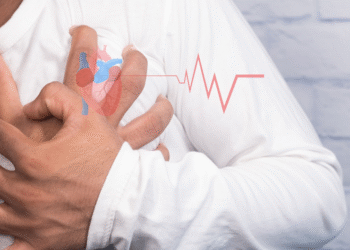Diabetes mellitus is a chronic (long-lasting) condition, and millions of people all over the globe are suffering from it. It has two variations: Type 1 and Type 2 diabetes. Type 1 diabetes is an autoimmune (also hereditary) condition where the 𝛃 cells in your pancreas do not work and produce insulin that has a key role in maintaining sugar levels in the body. So, type 1 diabetes is marked by insulin deficiency. In type 2 diabetes, the 𝛃 cells work properly and produce insulin, but the body is resistant to the insulin and does not use it efficiently, leading to a rise in blood glucose levels. So, type 2 diabetes is marked by insulin resistance.
Now that you have understood what type 1 and type 2 diabetes are, the question remains, ‘Is it possible that type 2 diabetes can convert into type 1 diabetes over time ?’ The answer is No. These are different conditions with the same result and do not convert from one to another. Let’s explore this more.
What Are the Reasons Behind This Myth?
We need to understand that there might be a few reasons behind this myth’s rise. Let’s explore those reasons.
Incorrect Diagnosis
There is a possibility that you suffer from type 1 diabetes and get misdiagnosed as type 2. The chances of this happening become higher if you are obsessed, live a sedentary lifestyle and the diagnosis is done in adulthood.
It is also possible that you develop type 1 diabetes in adulthood. However, the chances of this happening are less—an individual who gets diagnosed as type 2 and later as type 1 has received a misdiagnosis earlier.
The doctor might do blood tests to see if antibodies are attacking the insulin-making cells in the pancreas. If these antibodies are found, it usually means the person has type 1 diabetes. More than 90% of people with type 1 diabetes have these antibodies.
Another test helps the doctor determine whether the individual has type 1 or type 2 diabetes. It’s called a C-peptide test. This test checks how much insulin the person’s pancreas is making. If the result is low, it may mean the person has type 1 diabetes.
Latent Autoimmune Diabetes in Adults (LADA)
It is also possible that the individual with type 2 diabetes can get an incorrect diagnosis. You might have all the symptoms of type 2 diabetes but can suffer from a condition called latent autoimmune diabetes in adults (LADA).
So, what exactly is LADA? As the name suggests, it is also an autoimmune condition like type 1 diabetes. In LADA, the pancreatic cells start getting damaged over time, which may take several months to years. Some doctors call LADA between type 1 and type 2 diabetes. The research about LADA is still ongoing, but there are some facts about it we know. It is developed in adulthood, slower than type 1 diabetes, and can occur in individuals who aren’t overweight.
The symptoms of LADA are somewhat similar to type 1 and type 2 and include excessive urination, excessive thirst, high levels of blood sugar, presence of high levels of sugar in the urine, frequent bladder and skin infections, dry skin and fatigue.
Insulin Dependency
People with type 1 diabetes may need to change how they live, like eating less foods with lots of carbs. But only changing how they live won’t stop or turn back type 1 diabetes. So, people with type 1 diabetes depend on insulin. Some folks call this insulin-dependent diabetes. They need to check their blood sugar a lot. Even if they watch it closely and take insulin often, their blood sugar might get dangerously high sometimes. When this happens, they might need more insulin or urgent medical help.
People with type 2 diabetes might need insulin if other treatments don’t help enough with their blood sugar levels. They might also need insulin if they can’t take other diabetes meds or if their condition gets worse and their pancreas can’t make enough insulin anymore.
Diabetes and Online Medicine Delivery
The rise of online pharmacies has made managing diabetes easy. Medicine apps like Truemeds allow you to order medicine online easily from the comfort of your home and provide great discounts, making online medicine delivery a wonderful experience.
Takeaway
Type 1 and type 2 diabetes are different and don’t turn into each other. But people can use insulin to treat either type. For type 1 diabetes, insulin is the sole treatment. However, for type 2, some people might need insulin when the condition gets worse or if other treatments don’t work. At first, the symptoms of both types of diabetes might not be obvious. But if diabetes isn’t treated well, it can lead to severe problems, even life-threatening ones. The first signs of diabetes could be feeling very thirsty, needing to pee more often, and losing weight without trying.













